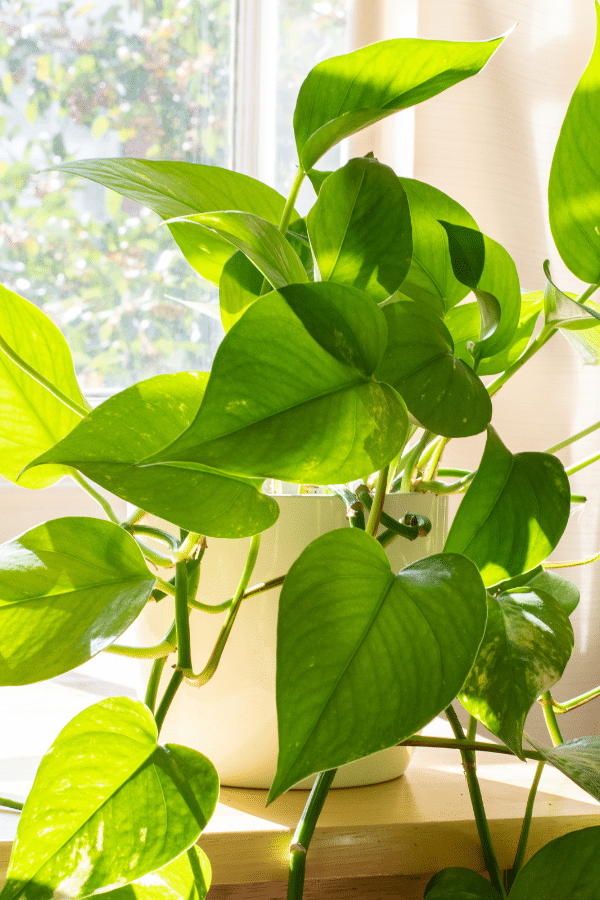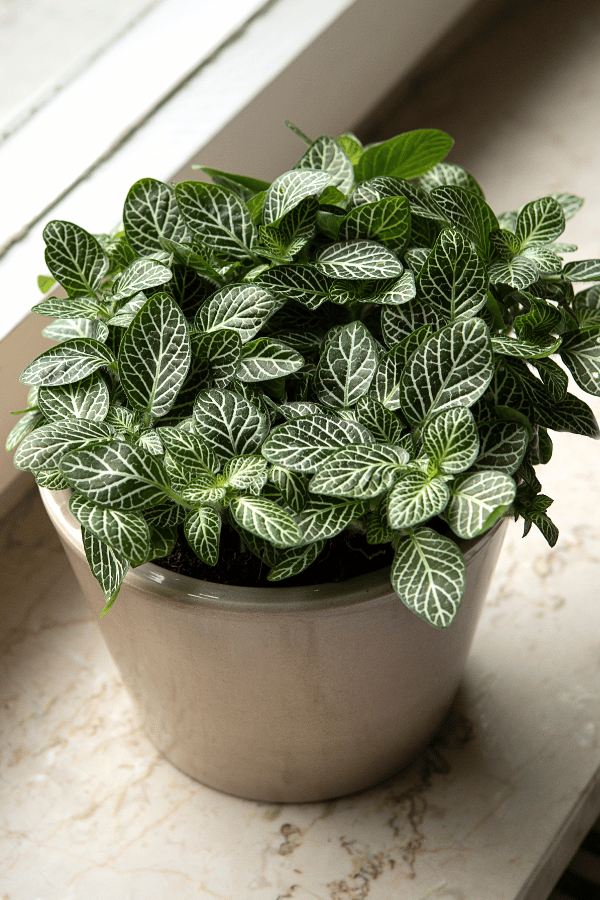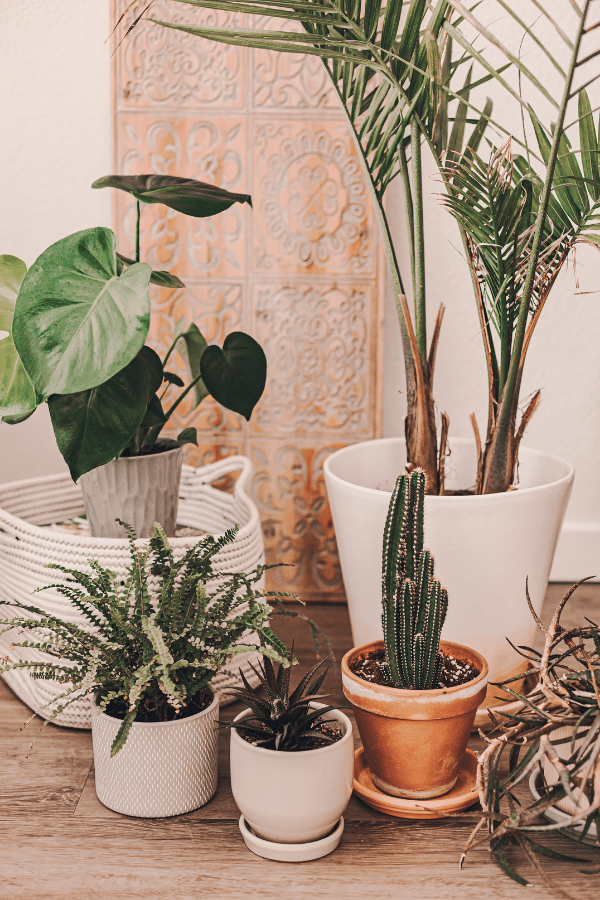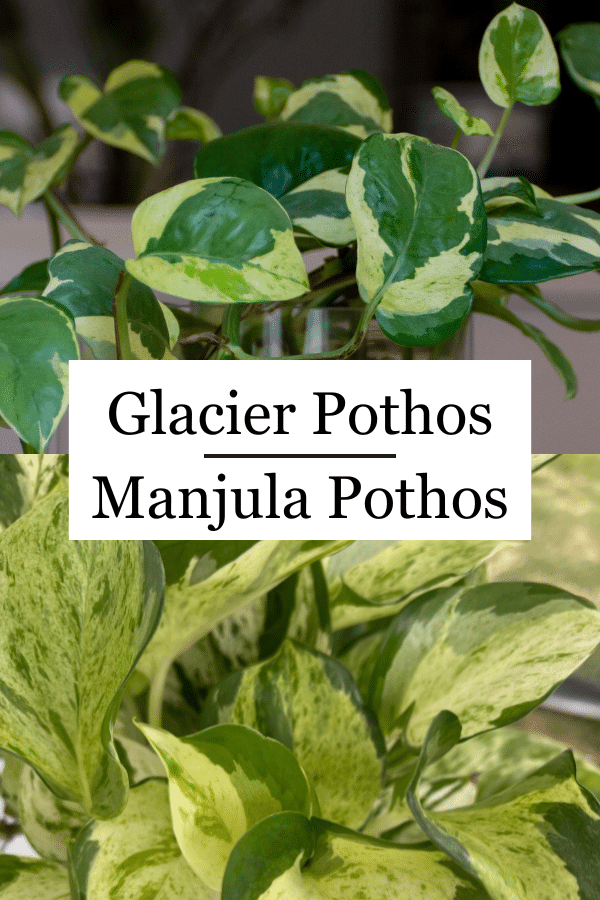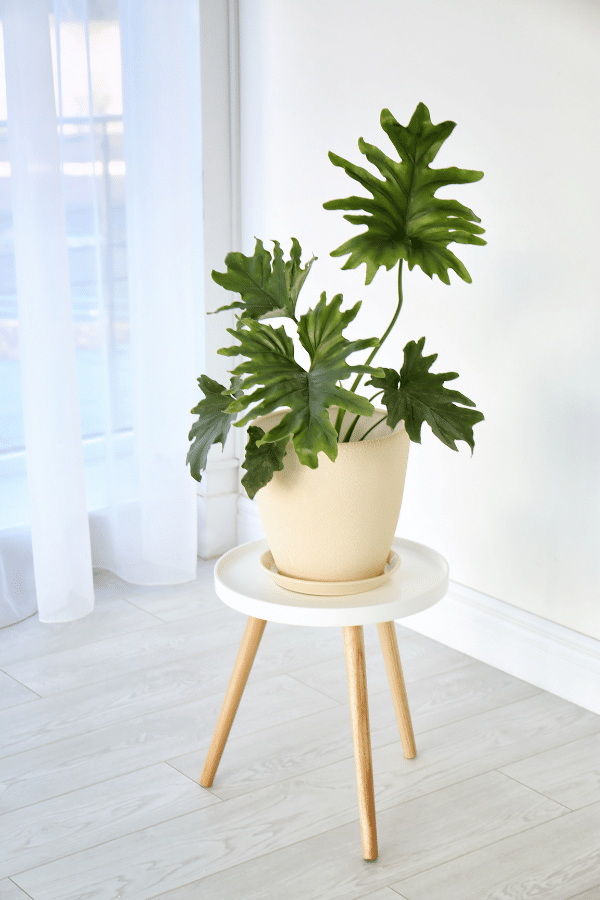How Often to Water Philodendron
Philodendron is a common houseplant that is easy to care for. They are known for their ability to thrive in low-light conditions and require minimal watering, but you might be wondering how often to water Philodendron? It’s a fine line with giving the plant too much water and not enough water where the soil is drying out too fast. Follow this guide to ensure your plant stays healthy and happy.
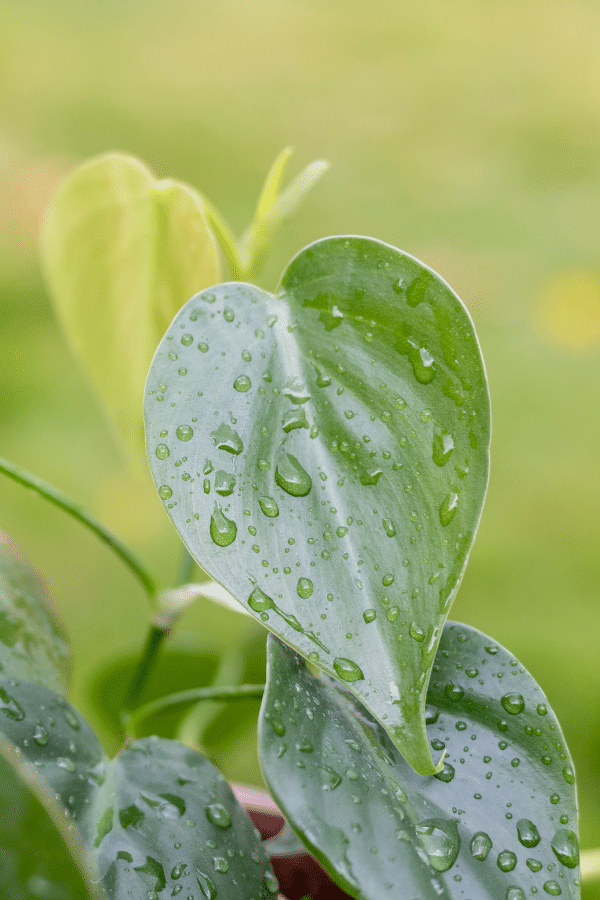
How to Water Philodendron
What Type of Water To Use
When it comes to watering potted Philodendrons, one key question is whether to use tap, rainwater, or filtered water.
Tap water contains salts and minerals that can cause pinholes on the leaves over time but, when left standing overnight before use, can be suitable for Philodendrons.
Rainwater is ideal as it will not contain salts or chlorine compounds but can quickly accumulate bacteria if collected in a container outside, which is not good for your plants. If you use rainwater, use it up right after a fresh rain.
Filtered water, or refrigerator water will be the best for everyday people to water their plants as some of the chlorine will be taken out from the filter.
Rainwater if used right away is a great option to use for watering Philodendrons, then filtered water, and another good optionis tap water so long as you let it sit out before watering so the chemicals can get absorbed out of the water and don’t go into your Philodendrons.
Top Watering Techniques
Watering Philodendrons can be done using the top-watering technique, which is probably the way you are most familiar with as it means adding no more water to the top of the soil than the soil can absorb without pooling or spilling over the pot. Begin by lightly moistening the surface of the soil and letting the excess water drain until the soil is completely saturated. The amount of time required will vary depending on the size, type and porosity of the potting mix that has been chosen.
If you begin to observe any wilting or discoloration of your philodendron leaves then this may be a sign that you need to adjust your watering schedule accordingly. Just remember to never leave standing water at the bottom of your plant’s pot and always let all excess moisture to drain out before re-potting in order to prevent any fungal development and root rot.
Bottom Watering Technique
The bottom watering technique is an effective way to water Philodendrons and other houseplants. To do this, simply fill a container like a pot or bowl with water and place the plant in it. Leave it in the bowl of water for 15 to 20 minutes. The soil will be able to draw up the water through capillary action.
This method helps to ensure moisture more evenly distributes and reaches all parts of the roots without over-saturating them. It also prevents potential damage from overwatering by allowing the roots themselves to dictate how much water they take in.
Common Watering Mistakes
Watering Philodendrons is a delicate balancing act. When done incorrectly, it can result in too much or too little water, leading to wilted or droopy leaves. Too much moisture can also promote fungus that affects the health of the plant. One of the most common mistakes when watering Philodendrons is over-watering, which results from not waiting long enough between waterings.
Philodendrons should only be watered after the top inches of soil feels dry to the touch; when in doubt, it’s better to wait and let the soil dry out more than necessary than risk exposure to standing water. On the other hand, under-watering can lead to brown leaf tips and decreased growth. To ensure your Philodendron gets adequate moisture without getting soggy feet, you should water regularly but always wait until the soil is somewhat dry before watering again.
Factors in Determining When to Water
From the pot type and size to the type of soil, there are many different factors in determining when to water that you want to be aware of.
Pot Type
Knowing when and how much to water is the key factor to creating a healthy environment for your plant, and pot type can be an influential determinant. Pots with a drainage hole, even if thinly-glazed antibacterial materials are used, help to regulate soil moisture and prevent root rot that often causes wilting or browning leaves. If a pot without a drainage hole is used instead, be sure to plant the Philodendron in a nursery pot then place it in a cachepot (pot without a drainage hole). In addition, using fast-draining soil can help the roots from becoming overly saturated; monitoring soil moisture levels by feel before watering is another way to eliminate overwatering concerns. Plastic pots are always good to keep your Philodendrons in but you can decorate them with a cache pot. Clay pots are another great option, but it may require more frequent watering due to the clay absorbing some of the water from the soil and plant.
Pot Size
When it comes to watering your Philodendron plants, however, one of the most important factors that should be taken into account is their pot size. Large pots will generally require less frequent watering than smaller ones; this is because the larger mass of soil tends to retain moisture longer and when you water larger plants, you use more water in general to saturate the soil.
When it comes to smaller pots, you may need to water more frequently – the amount depends on whether the pots are porous or nonporous. If you’re using a porous pot, water can evaporate faster; if it’s nonporous, water cannot escape as quickly but may evaporate due to evapotranspiration. Generally speaking, you should test the soil before watering; you can do this by inserting your finger up to the first knuckle and feeling for dryness. Additionally, if possible make sure that your Philodendron has some kind of drainage system in order to prevent root rot from overwatering.
Type of Soil
When caring for a Philodendron, you’ll have to consider the type of soil and soil moisture level. Philodendrons prefer potting mixes containing organic components such as peat moss, which helps the soil retain moisture longer than loam or sandy soils. Different types of soil can also vary greatly in other properties such as retention capacity, porosity, and drainage. These properties help determine when it’s time to water your plants.
Read this article on Philodendron soil to understand it a bit more in detail. Perlite will help to create more aeration in the soil so you’ll need to water more frequently, while vermiculite will help the soil to retain more moisture, hence needing to water the plant less. A well-draining soil is best to use for Philodendrons as you won’t have to worry much about overwatering then.
Type of Light
It is important to consider the type of light when it comes to properly caring for Philodendrons. These plants are native to tropical regions, so they prefer moist soil and plenty of humidity. For example, if a Philodendron is placed in a spot that gets direct sunlight throughout the day, it will need to be watered more often than one that is in an area with low light. Always give Philodendrons bright light and indirect light.
As a general rule, if the leaves are of medium green color, then the plant is getting sufficient water. When its leaves start to become limp or droopy, then it’s time to water. The best way to determine when and how much water your Philodendron needs is to observe its foliage on a regular basis and take note of any changes that indicate it might require more moisture.
Temperature
Caring for Philodendron plants entails many considerations, among them the question of when to best water them. As temperature plays a major factor in helping to determine this optimal time, understanding the science of why it matters is key. In general, warmer temperatures will cause Philodendrons to require slightly more frequent watering than cooler temps due to increased transpiration rates through the leaves.
Additionally, warm temperatures can cause water to evaporate more quickly from the soil after watering, leading to a dryer substrate sooner. Depending on the temperature where a plant is situated, especially if it changes seasonally, it’s important to adjust watering accordingly when determining what schedule works best for your houseplant’s needs.
Humidity
Another important factor in determining when to water a Philodendron is the humidity level of its environment, as the amount of moisture in the air directly impacts the rate at which it can absorb or lose water. When conditions are humid, less water needs to be added to keep the plant hydrated; however, during drier months, more frequent watering may be necessary in order to ensure that it remains healthy.
When to Water Philodendron
Watering in Summer
During the summer months, it is important to ensure that your Philodendron is receiving enough water. Generally, this will involve watering the plant every couple of days during periods of extreme heat in order to keep the top layer of soil moist but not soaking wet. Be sure to avoid over-watering your Philodendron as this can result in root rot and other issues. As long as you keep an eye out for any changes in moisture levels, your Philodendron should grow to its full potential during these hot months.
Watering in Winter
Taking care of your plants can be a challenge during the winter months, especially with changing temperature and decreased sunlight time. While it’s important to provide plants with sufficient water throughout the year, it’s even more critical during the colder seasons when they may not be able to draw water and nutrients from soil in quite the same way. Philodendrons are particularly susceptible to dehydration in the winter, so proper watering is a must.
The best approach is to allow soil to dry out completely between waterings and then give each plant enough water so the soil becomes visibly damp. You should begin by lightly testing the soil with a finger. Water until some liquid drains from bottom of pot and also check roots for signs of withering or discoloration as an indication of how much needs to be given.
Watering Philodendron Propagations
Propagating Philodendron plants from stem or leaf cuttings is a simple and enjoyable process that requires minimal effort but can offer big rewards. When caring for such propagation attempts, water should always be your top priority. It’s best to use tepid water when watering Philodendron propagations, as cold water can shock the newly forming roots and deter successful rooting. Aim to keep a steady level of humidity in the surrounding environment, but avoid misting the propagation itself directly.
The new cuttings need to absorb moisture through their stems to develop functional roots. Additionally, new Philodendron propagations should never sit in standing water; they perform best when allowed to almost dry out between watering cycles. Routinely check the substrate around your cutting for excess moisture and adjust your watering schedule accordingly, which will help ensure the healthiest possible start for your new plant!
Signs of Overwatering & How to Fix
An overwatered Philodendron is a common problem with plants, since it’s often difficult to guess the exact amount of water that the plant needs. Learn how to spot the tell-tale signs of an overwatered Philodendron and take action to bring your plant back to health. The first thing to look for is yellowing leaves, this can indicate either a nutrient deficiency or an excess of water.
If you recently watered your Philodendron, then yellow leaves are indicative of overwatering. In addition, look for wilting or droopy stems as another clue. If you notice any of these to be true, it’s time to dry out your soil by reducing watering frequency or cutting back on the amount of water.
Make sure you also check any drainage holes at the bottom of the pot; if they allow lots of water through after even moderate amounts have been added, they may not be doing their job properly. Finally, don’t rewater your plant until most excess moisture has had time to evaporate, and the top few inches of soil are dry to the touch, otherwise you could easily find yourself faced with another case of overwatering!
Signs of Underwatering & How to Fix
Underwatering can be difficult to diagnose but there are some tell-tale signs to look out for. Leaves may become dry, yellowed and brittle, brown, or may even drop off. The soil surface may also seem dehydrated. If you’ve never seen water drip from the bottom of the pot into the saucer or tray, your Philodendron may be underwatered. Always water until water drains from the bottom of the pot into the saucers of pots.
To fix underwatering issues, adjust your watering schedule and start watering more often. Also make sure when you are wateirng, you are saturating the soil completely, the soil should look as if it’s almost a different color after watering because of how well it is watered. Different pot types will absorb moisture differently, so be aware of slower-draining ceramic glazed pots. If planted in terracotta, you may need to water Philodendron plants more often as terracotta will absorb a lot of the moisture and water from the plant.

